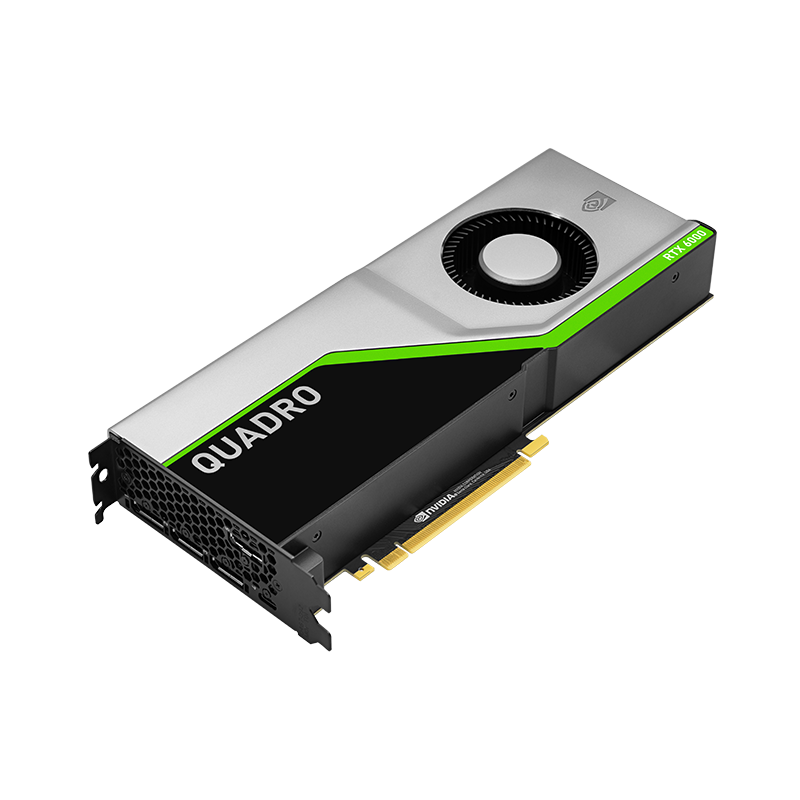

So those upcoming 1180 cards? They’ll probably be GeForce RTX 1180 and so on. As discussed on Reddit last week, Nvidia filed for a number of new trademarks, including Quadro RTX and GeForce RTX. The new naming scheme highlights the importance Nvidia is placing on the RT cores, and it seems likely that the future GeForce cards will carry the same RTX branding.
#Nvidia quadro 6000 professional#
These are professional GPUs designed for workstations used in film and video content creation, CAD/CAM, and scientific workloads.
#Nvidia quadro 6000 how to#
See also Animal Crossing New Horizons How To Pick The Best Gifts For Each VillagerĪlong with discussing the Turing architecture, Nvidia also talked about upcoming Quadro RTX cards planned for launch in Q4 of this year. And you can expect Nvidia to push hard on the RT Cores and RTX branding. All indications are that Turing will have clockspeeds similar to Pascal, only with 20 percent more CUDA cores.

So forget the rumors of 5,120 cores at 1.5GHz, or 3,840 at 2.5GHz. 4,608 cores doing FP32 FMA operations (two FLOPS) would require a clockspeed of 1736Mz to hit 16 TFLOPS. The 16 TFLOPS figure also gives us a realistic target for turbo clocks on the Turing GPUs. That gives Turing a maximum speed of 16 TFLOPS for floating-point operations (presumably FP32), and 16 TOPS of integer operations. The Turing SM (streaming multiprocessor) has also been reworked, with a new ability to issue floating-point and integer operations in parallel.
#Nvidia quadro 6000 upgrade#
A lower tier product has 3,072 CUDA cores, which would be a big upgrade for midrange GPUs. The new Turing GPUs will initially top out at a maximum of 4,608 CUDA cores, a small step down from the maximum 5,120 seen in the Volta GV100. Many have guessed-incorrectly-at the number of CUDA cores we’d see in Turing, but Nvidia has now provided at least two numbers. Nvidia says Turing processors will have up to 576 Tensor Cores, a step down from Volta, but Turing processors should still prove incredibly adept at deep learning training and inference.īesides these new features, Turing will include traditional graphics support with Nvidia CUDA cores. With Turing, Nvidia says it can do “up to 500 trillion tensor operations per second,” though these are INT4 (4-bit integer) operations rather than FP16 operations. The Volta GV100 includes 640 Tensor Cores with a peak computational speed of up to 110 TFLOPS (trillions of floating point operations per second) for FP16 (16-bit floating point) workloads. These provide a dense cluster of computational units that can be used to accelerate machine learning. The Tensor Cores are more of a known quantity. See also The Epic Games Store isnt clear enough about early access games That’s for the final rendering output, but the RT Cores can be up to 25 times faster than Pascal for ray-tracing operations, and “more than 30 times the speed of CPU nodes.” The RT Cores enable Turing-based GPUs to “simulate the physical world at up to six times the speed of the previous Pascal generation” GPUs. The goal appears to be real-time ray-tracing, something previously demonstrated at GDC earlier this year on Volta GPUs. The big surprise with Turing is that it will include Tensor Cores, which were first available in the Volta GV100, along with new RT Cores designed specifically to accelerate ray-tracing.

I guess everything prior to the introduction of the CUDA cores in 2006 is considered as one ‘architecture’? It’s no worse than the way Intel does CPU generations, though, so let’s move on. Prior to naming architectures after famous scientists, however, Nvidia had six additional generations of GeForce architectures. Working backward, there’s Volta, Pascal, Maxwell, Kepler, Fermi, and Tesla (six generations). Nvidia refers to Turing as its “eighth-generation GPU architecture,” but I’m not sure how it arrives at that number. You Are Reading : Nvidia unveils Turing architecture providing a glimpse inside the next GeForce cardsįirst, Turing is the name of the architecture, and it’s the next evolution of Nvidia GPUs following Volta.

Those GeForce GPUs are still likely to go on sale first, but we now have some clear ideas of what to expect. This comes as a bit of a surprise, as most have been expecting Turing to first show up in the RTX 2080 and other GPUs in the near future. It also spilled the beans on the upcoming line of Quadro RTX graphics cards for workstation users. Nvidia just unveiled its next generation Turing architecture at SIGGRAPH, a conference for graphics professionals. Nvidia unveils Turing architecture providing a glimpse inside the next GeForce cards


 0 kommentar(er)
0 kommentar(er)
